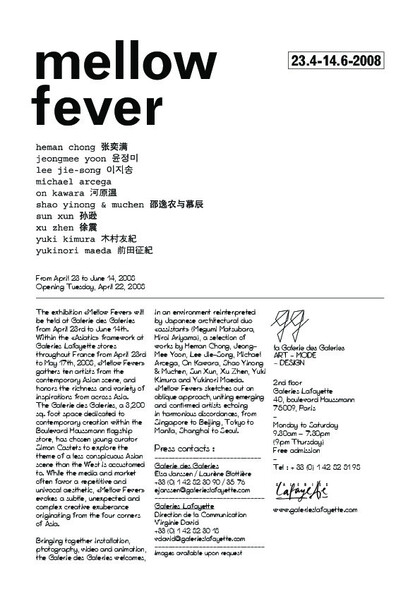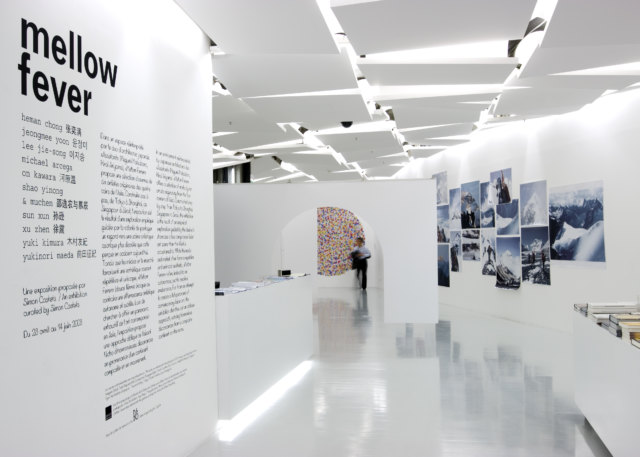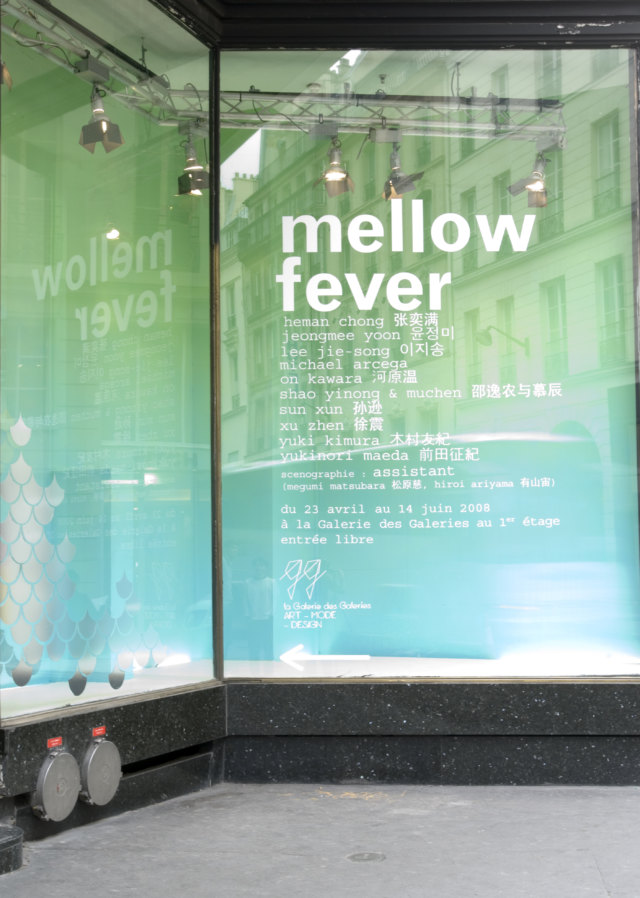-
2008.04.23-2008.06.14
Galerie des Galeries, Paris, FranceCountering the eulogistic tone of grand survey shows, Mellow Fever is a contemporary art exhibition of eleven Asian artists held at Galeries des Galeries, an art gallery supported by the commercial venture of Galeries Lafayette, the nineteenth-century mecca of haute couture and its historic flagship department store. The exhibition, commissioned to curator Simon Castets, is caught up within the framework of a two-week Asiatic frenzy promoted by the store as a marketing campaign popularizing a cultural bonanza from gastronomy to architecture from the Far East. The gallery, accessed independently from the department store, is the site of Castets’ wellconceived conceptual statement that defies conventional and market-favoured choices of artwork, and succeeds in bringing together an authentic grouping of creative personalities rather than countries that, as the curator states, evokes a subtle, unexpected, and complex vitality originating from Asia. The selected artists do not necessarily represent national or geographic characteristics yet, overall, Castets’ selection remains sensitive to aspects of their Asian origin that signify a specific territorial reality and transcontinental expanse. With a few exceptions, most of the artists are in their thirties and at a mid-career stage, and their artistic paths reveal an intricately subtle yet composite subjectivity: while the immediate encounter with the visual impact of the seemingly sober, complacent, and quiet artwork might temporarily leave a lingering sense of blandness, it is only through further contemplation that the depth within its apparent simplicity presents itself as a perceived experience.
Centred within the spatial architecture of the exhibition is On Kawara’s Today’s Series No.12 (Feb. 8, 1982) displayed conventionally in its own handmade cardboard box together with two newspaper clippings from the same year. The quiet and cryptic temporality buried beneath the messages in the artist’s oeuvre embodies a quintessential quality that is found in each of the works exhibited, a discrete yet intrinsic connotation of time consciousness. As with On Kawara’s poetic interventions that stretch life and death onto the self-imposed, proportionate surface of the painted texts—of what he himself calls “pure consciousness”—the other younger artists in the exhibition seemingly manifest a propensity for methods of depiction that convey the discrepancy between the real and our actual experience of it, regardless of their aesthetic object.
With social readjustment, economic disparity, ideological confusion, and political unrest incessantly present and offering no promise of abating, the fatal course of uninterrupted transformation that characterizes Asia today is the reality of our contemporaneity, a flexible non-cumulative form of existence, and a new chapter in the history of modernity. Whether intended as documentary or fiction, the artworks in Mellow Fever reflect the nature of alternative transformative gestures, and in their resistance to power, hierarchies, style, and taste, they evade the quick formulas of historical narrative, popular conventions, and myths of genre.
Appearance: Yishu Journal, July 2008







